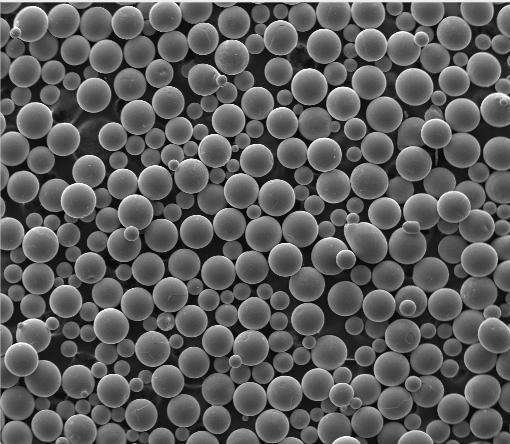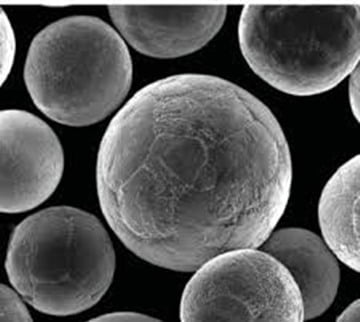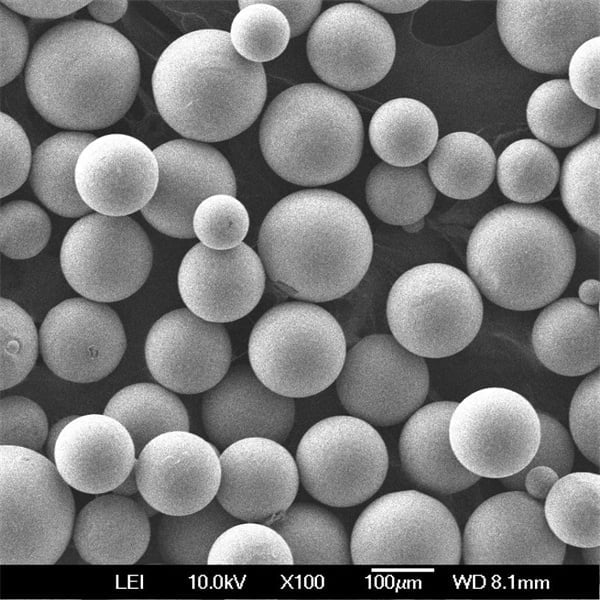When it comes to advanced materials in manufacturing, spheroidization powder plays a crucial role. Whether you’re diving into additive manufacturing or exploring new methods in powder metallurgy, understanding the specifics of spheroidization powder can make a significant difference in the outcome of your projects. This article is designed to give you an in-depth look at spheroidization powder, including its types, properties, applications, specifications, suppliers, and more.
Overview of Spheroidization Powder
Spheroidization powder is a type of metal powder known for its spherical particle shape. This specific morphology is achieved through processes like atomization and is vital in various high-precision manufacturing industries. Spheroidization improves flowability, packing density, and reduces internal stress in materials, making it a preferred choice for applications requiring high-performance materials.
What is Spheroidization Powder?
Spheroidization powder consists of metal particles that are transformed into a spherical shape to enhance their properties. The process involves melting the metal and allowing it to form droplets which solidify into spherical shapes. This powder is used extensively in additive manufacturing, powder metallurgy, and other high-tech applications due to its superior flowability and uniformity.
Why is it Important?
Imagine trying to pour sand versus marbles. The marbles (spherical particles) will flow more smoothly and pack more efficiently compared to irregularly shaped sand grains. This analogy applies to spheroidization powder in industrial processes. The spherical shape ensures better performance in processes like 3D printing, where precise layering is critical.

Types and Composition of Spheroidization Powder
Different types of spheroidization powders are available, each with unique compositions suited for specific applications. Here’s a detailed look at some of the common types and their compositions:
| Type | องค์ประกอบ | คุณสมบัติ |
|---|---|---|
| Titanium Alloy Powder | Ti-6Al-4V | High strength, lightweight, corrosion-resistant |
| Aluminum Alloy Powder | AlSi10Mg, Al6061 | Lightweight, good thermal conductivity |
| Stainless Steel Powder | 316L, 17-4PH | High corrosion resistance, good strength |
| Nickel Alloy Powder | Inconel 625, Inconel 718 | High temperature resistance, corrosion-resistant |
| ผงโลหะผสมทองแดง | CuCr1, CuNi2Si | Excellent electrical conductivity |
| Cobalt-Chrome Powder | CoCrMo | Biocompatibility, wear resistance |
| Tungsten Carbide Powder | WC-Co | Extreme hardness, wear resistance |
| Iron Powder | Fe, Fe-C | Good magnetic properties, cost-effective |
| Molybdenum Powder | Mo | High melting point, good electrical conductivity |
| Tantalum Powder | Ta | High melting point, excellent corrosion resistance |
Characteristics of Spheroidization Powder
Understanding the characteristics of spheroidization powder helps in selecting the right type for your application. Here are some key properties:
ความไหลได้
The spherical shape of the particles ensures excellent flowability. This is crucial in processes like additive manufacturing where consistent powder delivery is needed.
Packing Density
Spherical particles pack more densely compared to irregular ones. This improves the mechanical properties of the final product by reducing porosity.
Uniform Particle Size Distribution
A uniform particle size distribution ensures consistent layer thickness in additive manufacturing, leading to higher precision and better quality products.
Reduced Internal Stress
Spheroidized powders tend to have lower internal stresses, which translates to better durability and performance in the final product.
Applications of Spheroidization Powder
Spheroidization powder finds its application in a variety of high-tech industries. Let’s take a closer look at some of the major uses:
| แอปพลิเคชัน | คำอธิบาย |
|---|---|
| การผลิตแบบเติมเนื้อ | Used extensively in 3D printing for producing complex and precise components |
| ผงโลหะวิทยา | Essential for producing high-strength parts with superior properties |
| การพ่นเคลือบความร้อน | Applied in coatings to enhance surface properties like wear resistance |
| ขึ้นรูปโลหะด้วยการฉีด (MIM) | Used to create intricate parts with high precision |
| อวกาศ | Critical for lightweight, high-strength components |
| ชีวการแพทย์ | Used in producing implants and medical devices due to biocompatibility |
| เครื่องใช้ไฟฟ้า | Essential for components requiring high electrical conductivity |
Specifications, Sizes, and Standards
Different applications require specific grades and sizes of spheroidization powder. Here are some general specifications:
| Type | Particle Size (µm) | มาตรฐาน |
|---|---|---|
| Titanium Alloy Powder | 15-45, 45-105 | ASTM F2924, AMS 4998 |
| Aluminum Alloy Powder | 20-63, 63-150 | ASTM B928 |
| Stainless Steel Powder | 15-45, 45-105 | ASTM A276 |
| Nickel Alloy Powder | 15-53, 53-150 | ASTM B880 |
| ผงโลหะผสมทองแดง | 10-45, 45-105 | ASTM B187 |
| Cobalt-Chrome Powder | 15-45, 45-105 | ASTM F75, F1537 |
| Tungsten Carbide Powder | 1-5, 5-20 | ISO 4499 |
| Iron Powder | 45-150, 150-300 | ASTM A131 |
| Molybdenum Powder | 10-45, 45-105 | ASTM B386 |
| Tantalum Powder | 10-45, 45-105 | ASTM B365 |






Suppliers and Pricing Details
Here’s a look at some major suppliers and a general range of pricing for spheroidization powders:
| ซัพพลายเออร์ | แบบผง | Price Range (per kg) |
|---|---|---|
| แชนด์วิค | Titanium Alloy | $500 – $800 |
| Carpenter Technology | Aluminum Alloy | $200 – $400 |
| Höganäs | สเตนเลสสตีล | $50 – $150 |
| Praxair Surface Technologies | Nickel Alloy | $600 – $900 |
| GKN Powder Metallurgy | Copper Alloy | $100 – $300 |
| H.C. Starck | Cobalt-Chrome | $700 – $1000 |
| Kennametal | Tungsten Carbide | $80 – $120 |
| ผงโลหะ Rio Tinto | เหล็ก | $20 – $50 |
| Plansee | โมลิบดีนัม | $150 – $300 |
| Global Advanced Metals | แทนทาลัม | $1000 – $1500 |
Advantages and Limitations
Understanding the pros and cons of spheroidization powder can help you make an informed decision:
| ข้อได้เปรียบ | ข้อจำกัด |
|---|---|
| Improved flowability | Higher cost compared to irregular powders |
| Better packing density | Requires specialized equipment for production |
| Uniform particle size distribution | Limited availability for some alloy types |
| Reduced internal stress | Potential for oxidation in certain environments |
| Enhanced mechanical properties | Quality control can be challenging |
Comparing Spheroidization Powder Models
When choosing the right spheroidization powder for your application, it’s essential to compare different models based on their properties and suitability:
Titanium Alloy vs. Aluminum Alloy
Titanium alloy powders, like Ti-6Al-4V, are known for their high strength and corrosion resistance, making them ideal for aerospace applications. On the other hand, aluminum alloy powders, such as AlSi10Mg, are lightweight and offer good thermal conductivity, suitable for automotive and electronics applications.
Stainless Steel vs. Nickel Alloy
Stainless steel powders like 316L provide excellent corrosion resistance and strength, making them suitable for biomedical implants and food processing equipment. Nickel alloy powders, like Inconel 625, offer superior high-temperature resistance and are commonly used in turbine blades and other high-heat applications.
Copper Alloy vs. Cobalt-Chrome
Copper alloy powders, like CuCr1, are excellent for electrical conductivity and are widely used in electronics. Cobalt-chrome powders, such as CoCrMo, are biocompatible and wear-resistant, making them ideal for medical implants and dental applications.

คำถามพบบ่อย
Q: What is the primary advantage of using spheroidization powder in additive manufacturing?
A: The primary advantage is the improved flowability and uniform particle size distribution, which ensures consistent layer deposition and higher precision in the final product.
Q: How does the spheroidization process affect the properties of metal powders?
A: The spheroidization process transforms irregular particles into spherical shapes, enhancing flowability, packing density, and reducing internal stresses, which collectively improve the mechanical properties of the final product.
Q: Are there any specific standards that spheroidization powders need to meet?
A: Yes, different types of spheroidization powders must adhere to specific standards like ASTM, ISO, and AMS to ensure quality and performance. For instance, Titanium alloy powders like Ti-6Al-4V must comply with ASTM F2924.
Q: Can spheroidization powders be used in high-temperature applications?
A: Absolutely. Powders like Nickel alloys (e.g.,Inconel 718) are specifically designed to withstand high temperatures, making them ideal for applications like turbine blades and other high-heat environments.
Q: What are some common applications of spheroidization powder in the biomedical field?
A: In the biomedical field, spheroidization powders are used to manufacture implants and medical devices. Materials like Cobalt-Chrome (CoCrMo) are biocompatible and wear-resistant, making them perfect for hip implants and dental prosthetics.
Q: How does the cost of spheroidization powder compare to other metal powders?
A: Spheroidization powders tend to be more expensive due to the specialized processes involved in their production. However, the improved properties and performance can justify the higher cost in critical applications.
Q: What is the typical particle size range for spheroidization powders used in 3D printing?
A: The typical particle size range for spheroidization powders used in 3D printing varies from 15-45 µm to 45-105 µm, depending on the specific application and printer requirements.
Q: Are there any environmental concerns associated with the production or use of spheroidization powders?
A: The production of spheroidization powders can involve high energy consumption and potential emissions, depending on the processes used. However, advancements in technology are continually reducing the environmental impact. Additionally, proper handling and recycling practices can mitigate these concerns.
Q: Can spheroidization powders be customized for specific applications?
A: Yes, many suppliers offer customization options to tailor the composition, particle size distribution, and other properties to meet the specific needs of different applications.
Q: What factors should be considered when selecting a supplier for spheroidization powder?
A: Key factors include the supplier’s reputation, compliance with standards, customization capabilities, pricing, and customer support. It’s also important to consider the consistency and quality control measures the supplier has in place.
Q: How does the performance of spheroidization powder compare to traditional metal powders in thermal spraying applications?
A: Spheroidization powders offer superior performance in thermal spraying due to their improved flowability and uniformity, resulting in better coating quality and durability compared to traditional metal powders.
Q: What is the role of spheroidization powder in powder metallurgy?
A: In powder metallurgy, spheroidization powder is used to produce high-density, high-strength parts with improved mechanical properties, which are essential for demanding applications like aerospace and automotive components.
บทสรุป
Spheroidization powder is a game-changer in various high-tech industries, providing enhanced properties that significantly improve the performance and quality of final products. From additive manufacturing to biomedical applications, the advantages of using spheroidization powder are clear. By understanding the types, properties, and applications, as well as considering the right specifications and suppliers, you can make informed decisions to leverage these advanced materials in your projects. Whether you are comparing titanium alloy powders against aluminum or choosing the right powder for high-temperature applications, this guide offers comprehensive insights to help you navigate the world of spheroidization powders.
About 3DP mETAL
Product Category
ติดต่อเรา
มีคำถามอะไรไหม? ส่งข้อความมาเดี๋ยวนี้! หลังจากที่ได้รับข้อความแล้ว เราจะประมวลผลคำขอของคุณพร้อมทีมงานทั้งหมด
